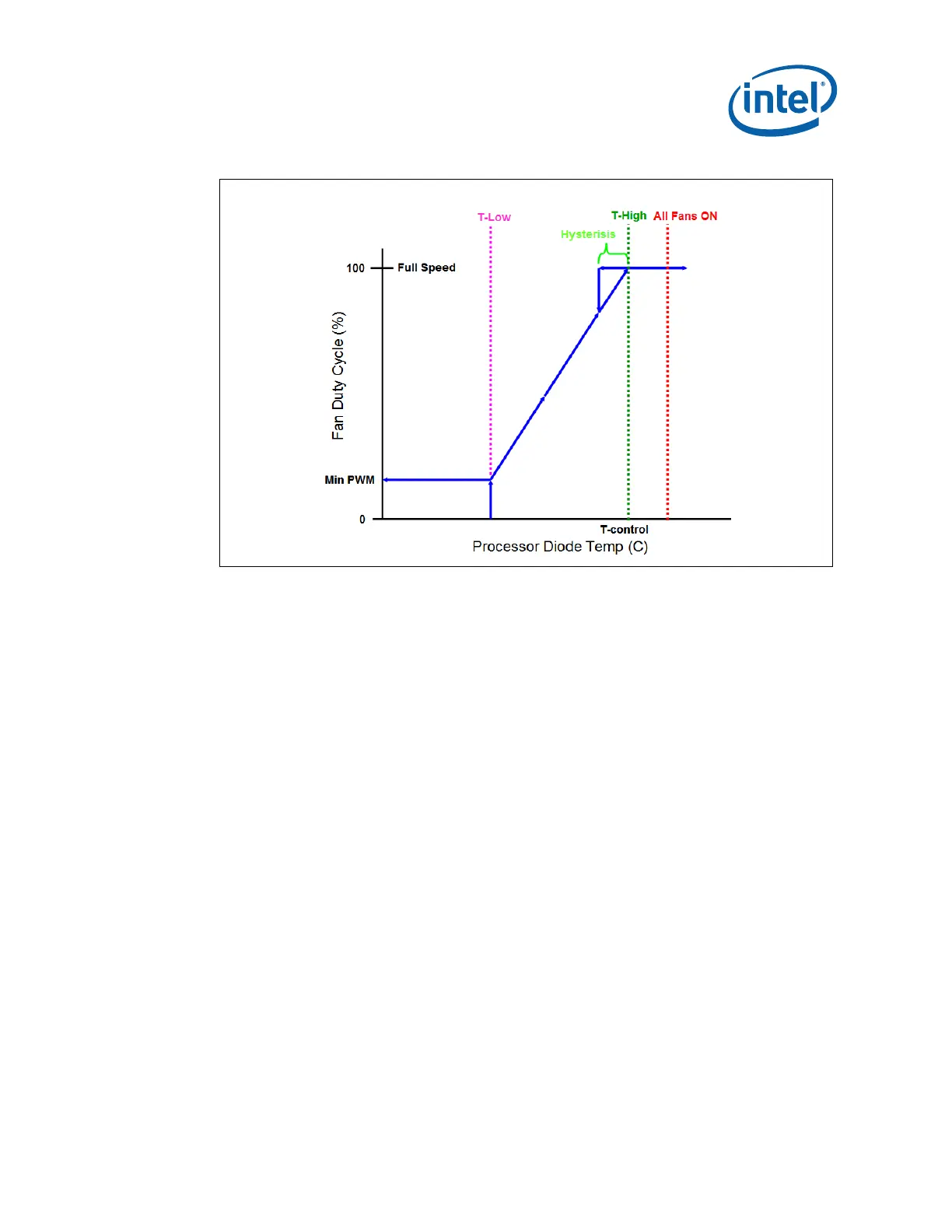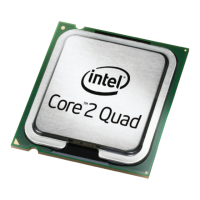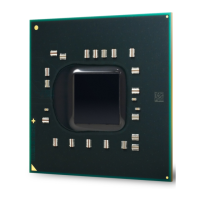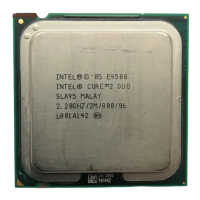Legacy Fan Speed Control
Thermal and Mechanical Design Guidelines 105
Figure 63. FSC Definition Example
Requirements Classification
• Required – an essential part of the design necessary to meet specifications.
Should be considered a pass or fail in selection of a board.
•
Suggested – highly desired for consistency among designs. May be specified or
expanded by the system integrator.
The motherboard needs to have a fan speed control component that has the following
characteristics:
•
PWM output programmable to 21-28 kHz (required). PWM output set to 25 kHz
(Suggested) as this value is the design target for the reference and for the Boxed
Processor.
•
External/remote thermal sensor measurement capability (required). Must support
PECI and thermal diode via an SST device
•
External/remote thermal sensor sampling rate ≥ 4 times per second (required).
• External/remote diode measurement (SST device) is calibrated by the component
vendor to account for the diode ideality and package series resistance as listed in
the appropriate datasheet. (Suggested).
Note: If the SST thermal sensor is not calibrated with the diode ideality and package series
resistance, verify the board manufacturer has made provisions within the BIOS setup
or other utility to input the corrections factors.
The BIOS, at a minimum, must program the settings in
Table 13 or Table 14, as
appropriate, into the fan speed controller. The values are the minimum required to
establish a fan speed control algorithm consistent with this document, the reference
thermal solution and Boxed Processor thermal solution.

